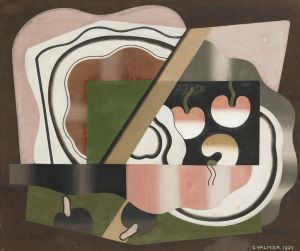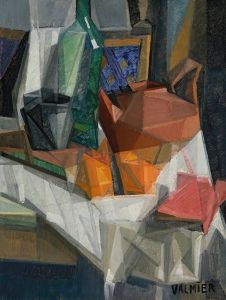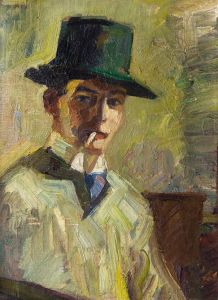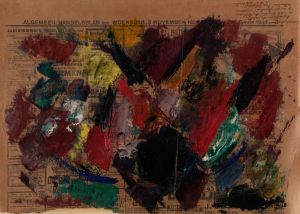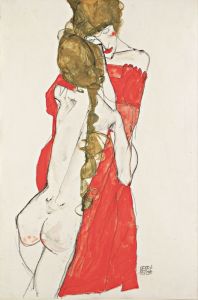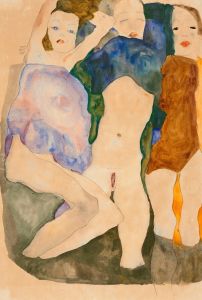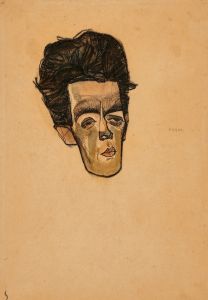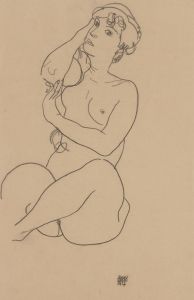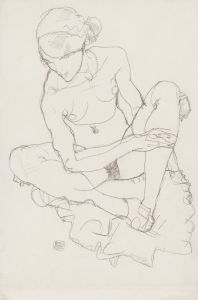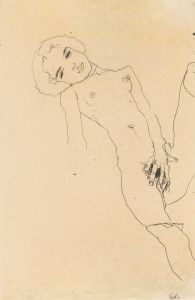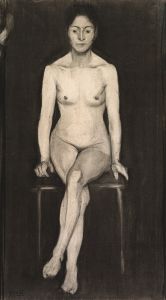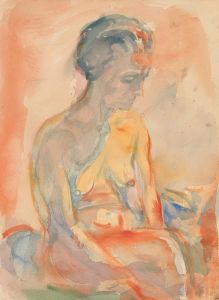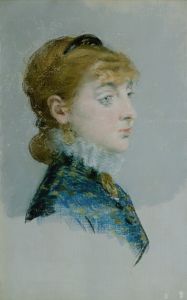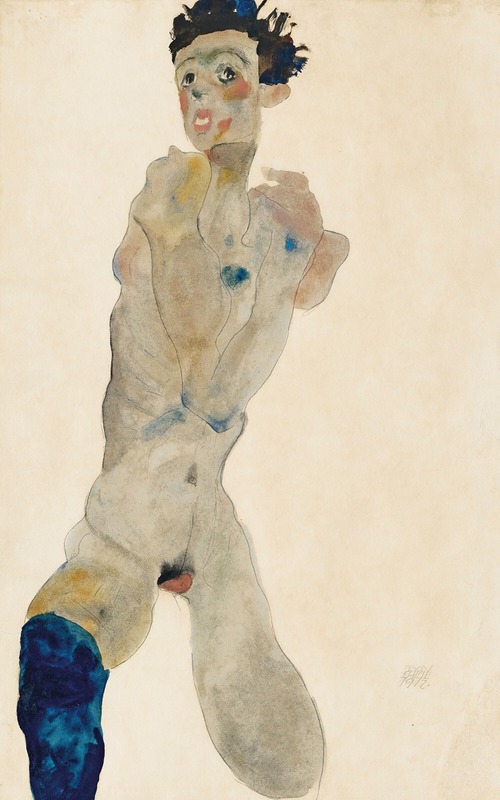
Stehender männlicher Akt mit verschränkten Armen
A hand-painted replica of Egon Schiele’s masterpiece Stehender männlicher Akt mit verschränkten Armen, meticulously crafted by professional artists to capture the true essence of the original. Each piece is created with museum-quality canvas and rare mineral pigments, carefully painted by experienced artists with delicate brushstrokes and rich, layered colors to perfectly recreate the texture of the original artwork. Unlike machine-printed reproductions, this hand-painted version brings the painting to life, infused with the artist’s emotions and skill in every stroke. Whether for personal collection or home decoration, it instantly elevates the artistic atmosphere of any space.
Egon Schiele, an Austrian painter known for his distinctive and often provocative style, created "Stehender männlicher Akt mit verschränkten Armen" (Standing Male Nude with Crossed Arms) in 1910. This work is a notable example of Schiele's exploration of the human form and his interest in capturing raw, unidealized representations of the body. Schiele was a protégé of Gustav Klimt and a key figure in early 20th-century Austrian Expressionism, a movement characterized by its focus on emotional experience rather than physical reality.
The painting depicts a male figure standing with his arms crossed over his chest, a pose that conveys a sense of introspection and vulnerability. Schiele's use of line is particularly striking in this work, as he employs sharp, angular contours to define the figure's form. This technique highlights the tension and dynamism within the pose, a hallmark of Schiele's approach to figure drawing. The artist's emphasis on the skeletal structure and musculature of the body reflects his interest in anatomy and his desire to portray the human figure in a way that is both truthful and expressive.
Schiele's palette in this work is relatively muted, with earthy tones that contribute to the somber mood of the piece. The background is minimal, drawing the viewer's attention to the figure itself and emphasizing the isolation of the subject. This focus on the individual and the psychological depth of the portrayal is a common theme in Schiele's work, as he often sought to explore the complexities of human emotion and identity.
During the time this painting was created, Schiele was beginning to gain recognition for his unique style, which was both celebrated and criticized for its boldness and perceived eroticism. His work often challenged societal norms and conventions, leading to both acclaim and controversy. "Stehender männlicher Akt mit verschränkten Armen" is a reflection of Schiele's commitment to pushing the boundaries of traditional portraiture and his interest in exploring themes of existentialism and the human condition.
Egon Schiele's career was tragically short, as he died in 1918 at the age of 28 due to the Spanish flu pandemic. Despite his brief life, Schiele left a significant impact on the art world, influencing future generations of artists with his innovative approach to form and his fearless exploration of the human psyche. His works, including "Stehender männlicher Akt mit verschränkten Armen," continue to be studied and admired for their emotional intensity and technical mastery.
Today, Schiele's paintings are held in high regard and are featured in major art collections around the world. They serve as a testament to his skill as an artist and his ability to capture the complexities of the human experience in a way that resonates with viewers even a century after they were created. "Stehender männlicher Akt mit verschränkten Armen" remains an important piece within Schiele's oeuvre, exemplifying his distinctive style and his enduring legacy in the realm of modern art.





